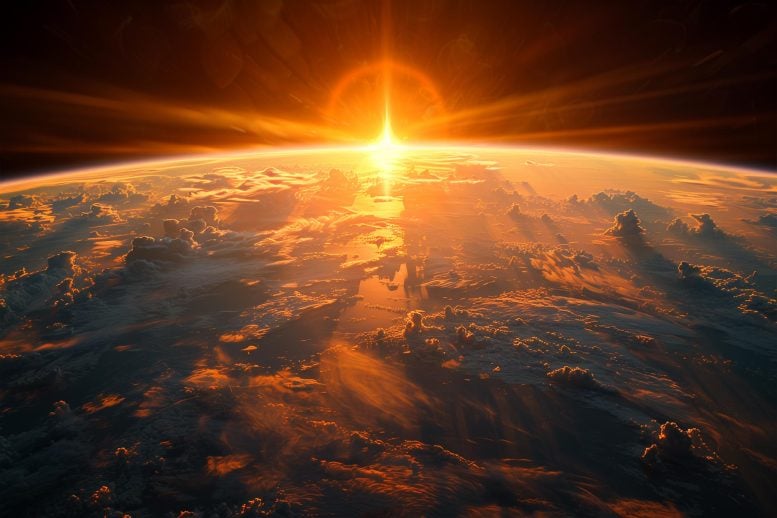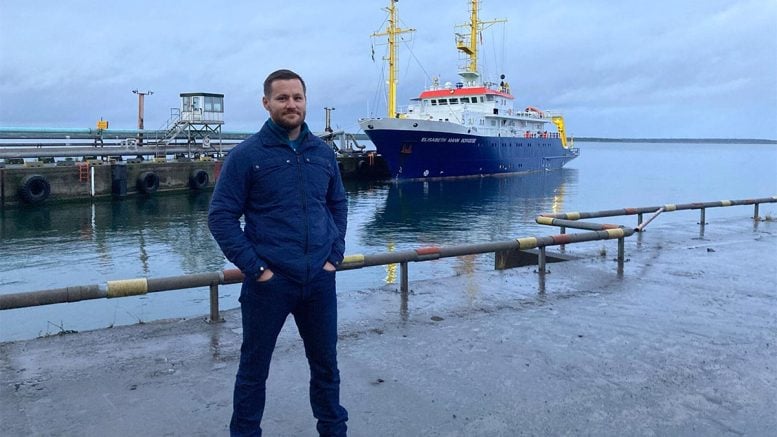
Studies of marine shales and isotope data from the period of the Great Oxidation Event reveal dynamic fluctuations of oxygen in Earth’s atmosphere and oceans, highlighting the prolonged and complex nature of this critical evolutionary stage. Credit: SciTechDaily.com
Earth’s “great oxidation event” spanned 200 million years, according to recent discoveries.
New research highlights the complexity of the Great Oxidation Event, revealing that the increase in atmospheric and oceanic oxygen was a dynamic process that lasted more than 200 million years, influenced by key geological and biological factors to the evolution of life.
The Great Oxidation Event
About 2.5 billion years ago, free oxygen, or O2have begun to accumulate to significant levels in Earth’s atmosphere, paving the way for complex life to flourish on our evolving planet.
Scientists call this phenomenon the Great Oxidation Event, or GOE for short. But the initial accumulation of O2 on Earth wasn’t as simple as that nickname suggests, according to new research led by a University of Utah geochemist.
This “event” lasted at least 200 million years. And follow the accumulation of O2 in the oceans has been very difficult so far, said Chadlin Ostrander, assistant professor in the Department of Geology and Geophysics.
“Emerging data suggests that the initial rise in O2 in the Earth’s atmosphere was dynamic, unfolding in fits and starts until perhaps 2.2. a billion years ago,” said Ostrander, lead author of the study published June 12 in the journal Nature. “Our data validate this hypothesis, going even further by extending this dynamic to the ocean. »

Chadlin Ostrander. Credit: Chad Ostrander, University of Utah
Overview of Marine Shales
Its international research team, supported by the
” data-gt-translate-attributes=”({“attribute”:”data-cmtooltip”, “format”:”html”})” tabindex=”0″ role=”link”>NASA Exobiology program, focusing on the marine shales of the Transvaal Supergroup in South Africa, providing insight into the dynamics of ocean oxygenation during this crucial period in Earth’s history. By analyzing stable isotope ratios of thallium (Tl) and redox-sensitive elements, they found evidence of fluctuations in marine O.2 levels that coincided with changes in atmospheric oxygen.
These discoveries help advance understanding of the complex processes that shaped Earth’s O.2 levels during a critical period in the planet’s history that paved the way for the evolution of life as we know it.
Understanding Early Ocean Conditions
“We really don’t know what was happening in the oceans, where the first life forms on Earth probably appeared and evolved,” said Ostrander, who joined the University faculty last year from the Woods Hole Oceanographic Institution in Massachusetts. “So, knowing the O2 The contents of the oceans and how they have changed over time are probably more important to the beginning of life than the atmosphere.
The research builds on the work of Ostrander’s co-authors, Simon Poulton of the University of Leeds in the United Kingdom and Andrey Bekker of the University of California, Riverside. In a 2021 study, their team of scientists discovered that O2 did not become a permanent part of the atmosphere until about 200 million years after the global oxygenation process began, much later than previously thought.
Atmospheric and oceanic oxygen fluctuations
Compelling evidence for an anoxic atmosphere is the presence of rare, mass-independent sulfur isotope signatures in the sedimentary records submitted to the GOE. Very few processes on Earth can generate these sulfur isotope signatures, and from what is known, their preservation in the rock record almost certainly requires an absence of atmospheric O.2.
During the first half of Earth’s existence, its atmosphere and oceans were largely devoid of O.2. This gas was produced by cyanobacteria in the ocean before GOE, it seems, but in those early days, O2 was quickly destroyed by reactions with exposed minerals and volcanic gases. Poulton, Bekker and their colleagues found that rare sulfur isotope signatures disappear and then reappear, suggesting multiple O2 rises and falls in the atmosphere during the GOE. This was not a single “event.”
The challenges of oxygenating the Earth
“The Earth was not ready to be oxygenated when oxygen began to be produced. The Earth needed time to evolve biologically, geologically and chemically to be conducive to oxygenation,” Ostrander said. “It’s like a seesaw. You have oxygen production, but there is so much oxygen destruction that nothing happens. We are still trying to determine when we will have completely tipped the scales and the Earth will no longer be able to slip back into an anoxic atmosphere.
Today, oh2 represents 21% of the atmosphere, by weight, just behind nitrogen. But after the GOE, oxygen remained a very small component of the atmosphere for hundreds of millions of years.
Advanced isotope analysis techniques
To track the presence of O2 in the ocean during the GOE, the research team relied on Ostrander’s expertise in stable isotopes of thallium.
Isotopes are atoms of the same element that have unequal numbers of neutrons, giving them slightly different weights. Isotopic ratios of a particular element have fueled discoveries in archaeology, geochemistry, and many other fields.
Thallium isotopes and oxygen indicators
Advances in mass spectrometry have allowed scientists to accurately analyze isotopic ratios of elements lower and lower in the periodic table, such as thallium. Fortunately for Ostrander and his team, thallium isotope ratios are sensitive to the burial of manganese oxide on the seafloor, a process that requires O2 in seawater. The team examined thallium isotopes in the same marine shales recently shown to track atmospheric O2 fluctuations during GOE with rare sulfur isotopes.
In the shales, Ostrander and his team discovered notable enrichments in the lighter mass isotope of thallium (203Tl), a pattern best explained by the burial of manganese oxide on the seafloor, and therefore the accumulation of O2 in seawater. These enrichments were found in the same samples lacking the rare isotopic signatures of sulfur, and therefore when the atmosphere was no longer anoxic. The icing on the cake: the 203The Tl enrichments disappear when the rare sulfur isotopic signatures return. These results were corroborated by enrichments of redox-sensitive elements, a more traditional tool for tracking changes in ancient O.2.
“When the sulfur isotopes say that the atmosphere has become oxygenated, the thallium isotopes say that the oceans have become oxygenated. And where sulfur isotopes say the atmosphere has become anoxic again, thallium isotopes say the same thing for the ocean,” Ostrander said. “So the atmosphere and the ocean were oxygenating and deoxygenating together. This is new and interesting information for those interested in ancient Earth.
Reference: “Onset of coupled atmosphere-ocean oxygenation 2.3 billion years ago” by Chadlin M. Ostrander, Andy W. Heard, Yunchao Shu, Andrey Bekker, Simon W. Poulton, Kasper P. Olesen and Sune G. Nielsen, June 12, 2024, Nature.
DOI: 10.1038/s41586-024-07551-5